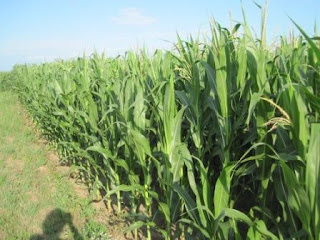One day in late July of 2012 all of the "stars aligned in the universe" for our hops farm in west Michigan.
Our long awaited Wolf harvester was set to arrive at our farm at 9 am on a Saturday.
The truck arrived at 9 am.
Our good friends just happened to be visiting that weekend and were willing to help us.
A local farmer who owns the equipment needed to unload and set the harvester in place was available and arrived along with his talented operator just before the delivery truck
.
Our cement contractor volunteered his services and equipment to assist in unloading the harvester.
Our daughter, Stephanie was also visiting this weekend and took these fantastic pictures.
It was not raining.
We had three hours to unload the truck before extra deilvery charges would begin to accrue.
Our team was successful. Everything was unloaded and the trucker was on his way back to Detroit shortly after noon hour.
The next task was to get the harvester set in place on it's new "forever" home.
When the opportunity to purchase a refurbished Wolf harvester presented itself in early May, we realized that a great hurdle to overcome would be it's shelter. Our farm's barn and outbuildings were originally constructed at the turn of the century (1900). These buildings are not designed to house modern equipment, let alone 14 ft tall machines. It became the perfect opportunity for us to build the modern pole barn that we have been wanting. The right location was selected. Our harvester was set to arrive before our pole barn could be built, so best option was to pour a cement slab for it, (which represents one quarter of the future floor of the barn) and then build the barn around the machine.
The lower section of the harvester was set precisely in place. No problems...
Time for Howard to begin welding on brackets for the placement of the top section.
Jack of all trades
The top piece rests peacefully under the shade of the maple tree....
While the boss ladies relax and enjoy a martini in anticipation of the daunting task to be completed.
The second piece is being lifted. Okay guys, be careful of my flowers......
All right, now the tricky job of lifting, lining everything up and setting it in place....
Getting closer.....
Watch your head Paul!....
JT and Howard have it all under control....
Then they called in for some extra hands for the final placement....Not sure if this was such a good idea.
Almost there....
Skills......that's all I can say. Everyone there that day contributed all they had to offer. We are forever grateful.
A happy hops harvester finds its new home in America.


























































